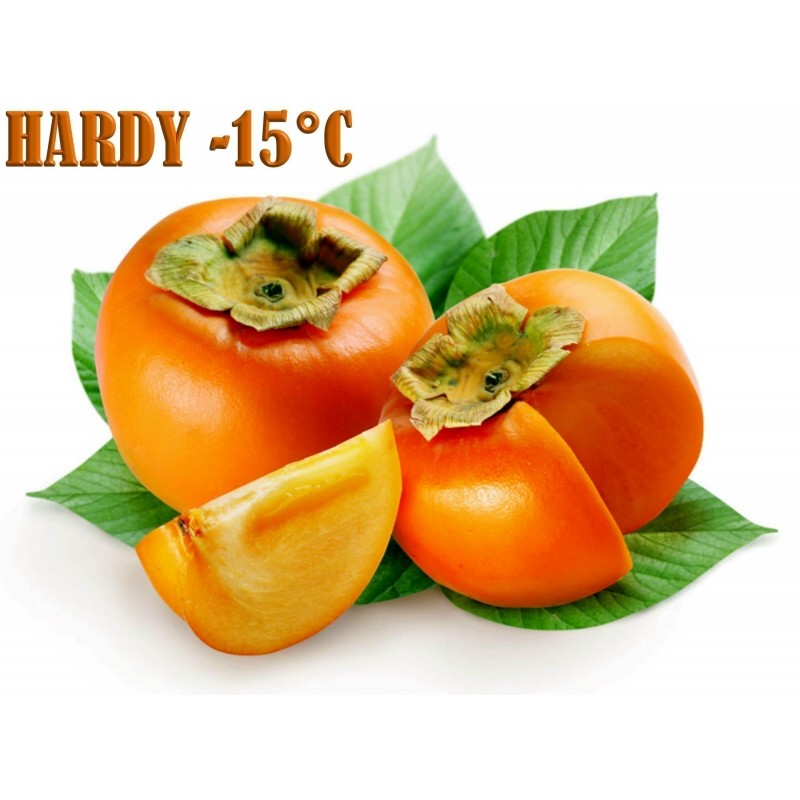
Variety from Japan








Japanese Persimmon is a deciduous fruiting tree with a rounded spreading crown that grows 20 to 30 feet tall. This tree is noted not only for its edible fruits but also for its excellent
Japanese Persimmon is a deciduous fruiting tree with a rounded spreading crown that grows 20 to 30 feet tall. This tree is noted not only for its edible fruits but also for its excellent ornamental features. Oval to obovate leaves to 6 inches long emerge yellowish green in spring, mature to glossy green in summer and turning an attractive gold to red in fall. Trees are usually dioecious (separate male and female trees), but some trees have both male and female flowers. Notwithstanding the flower types, trees are parthenocarpic (may set seedless fruit without pollination). Fragrant, non showy flowers bloom in late spring, with the creamy white female flowers appearing solitary and the pink toned male flowers appearing in clusters of three. Edible Persimmon fruits to 4 inches in diameter mature in late fall, and may persist on the tree into winter. The tree is a sight to behold when leaves have fallen in autumn, displaying the bright yellow orange fruits throughout the canopy. Japanese Persimmon is native to Japan and mainland Asia where they have been cultivated for centuries. They were brought to the southern United States in the 1870’s.
Fruits may be harvested when the skins reach deep orange. Fruits can be eaten fresh or dried (hoshigaki) and are commonly used in syrups, jellies, ice creams, cakes or pies. Persimmon leaves can be used to make teas.
|
Sowing Instructions |
|
|
Propagation: |
Seeds |
|
Pretreat: |
about 24 hours soak in warm water |
|
Stratification: |
about 2-3 months in a moist substrate at 2-5 ° C refrigerator |
|
Sowing Time: |
all year round |
|
Sowing Depth: |
1 cm |
|
Sowing Mix: |
Coir or sowing mix + sand or perlite |
|
Germination temperature: |
about 22-25 ° C. |
|
Location: |
bright + keep constantly moist not wet |
|
Germination Time: |
until it germinates |
|
Watering: |
Water regularly during the growing season |
|
|
|
Data sheet